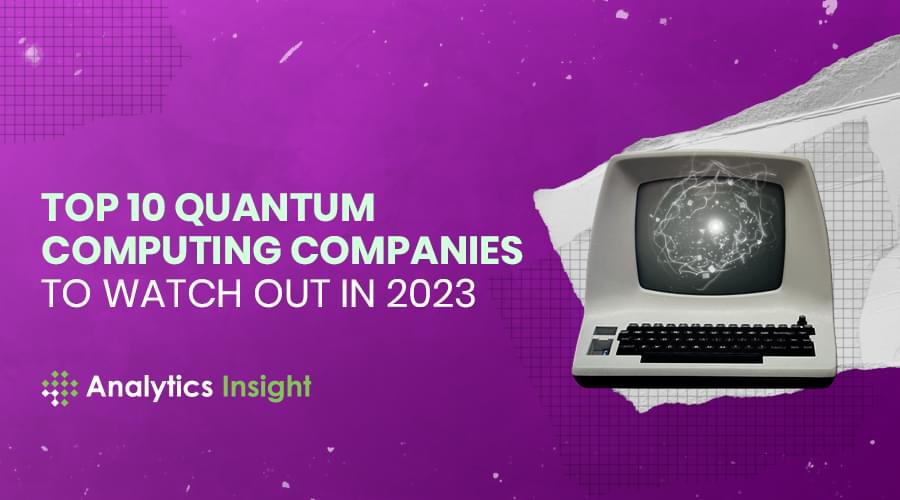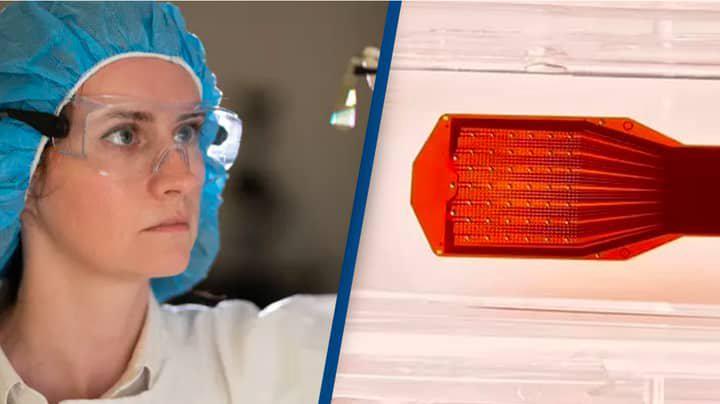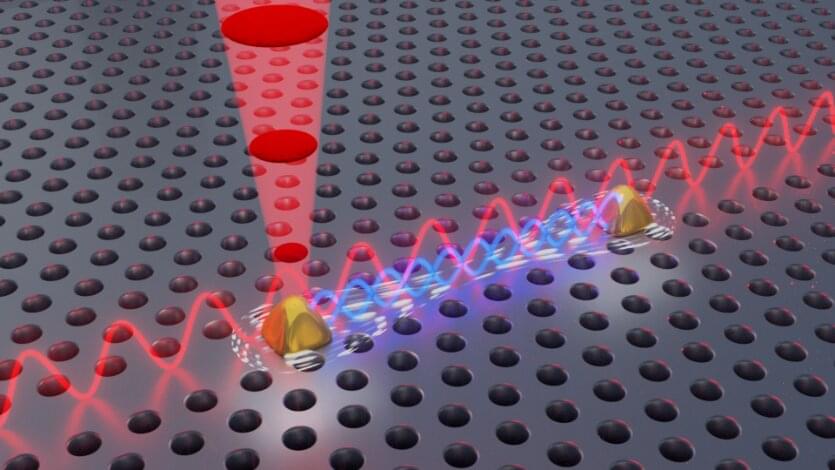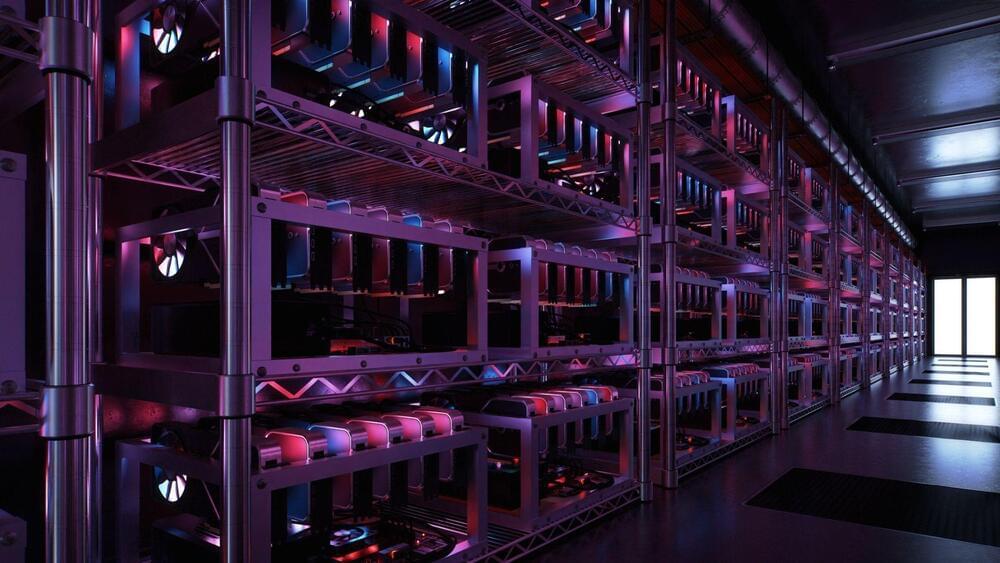After a century of Einsteinian relativistic physics gone unchallenged, Computational Physics assume this demonstrable challenge.
Category: computing – Page 353
Discover the top 10 quantum computing companies that are leading the way in this cutting-edge technology and investing in quantum computing.
A team of researchers used quantum computing and computer learning to describe what is believed to be the interior of a black hole.
Scientists have developed a minuscule brain implant smaller than a human hair which allows people to control computers with their minds. The chip is developed by Precision Neuroscience and works along similar principles to those of Elon Musk’s Neuralink company, though the Precision chip sits on the brain rather than in the tissue.
In recent years, many physicists and computer scientists have been working on the development of quantum computing technologies. These technologies are based on qubits, the basic units of quantum information.
In contrast with classical bits, which have a value of 0 or 1, qubits can exist in superposition states, so they can have a value of 0 and 1 simultaneously. Qubits can be made of different physical systems, including electrons, nuclear spins (i.e., the spin state of a nucleus), photons, and superconducting circuits.
Electron spins confined in silicon quantum dots (i.e., tiny silicon-based structures) have shown particular promise as qubits, particularly due to their long coherence times, high gate fidelities and compatibility with existing semiconductor manufacturing methods. Coherently controlling multiple electron spin states, however, can be challenging.
In a new breakthrough, researchers at the University of Copenhagen, in collaboration with Ruhr University Bochum, have solved a problem that has caused quantum researchers headaches for years. The researchers can now control two quantum light sources rather than one. Trivial as it may seem to those uninitiated in quantum, this colossal breakthrough allows researchers to create a phenomenon known as quantum mechanical entanglement. This in turn, opens new doors for companies and others to exploit the technology commercially.
Going from one to two is a minor feat in most contexts. But in the world of quantum physics, doing so is crucial. For years, researchers around the world have strived to develop stable quantum light sources and achieve the phenomenon known as quantum mechanical entanglement—a phenomenon, with nearly sci-fi-like properties, where two light sources can affect each other instantly and potentially across large geographic distances.
Entanglement is the very basis of quantum networks and central to the development of an efficient quantum computer.
An international team of scientists have demonstrated a leap in preserving the quantum coherence of quantum dot spin qubits as part of the global push for practical quantum networks and quantum computers.
These technologies will be transformative to a broad range of industries and research efforts: from the security of information transfer, through the search for materials and chemicals with novel properties, to measurements of fundamental physical phenomena requiring precise time synchronization among the sensors.
Spin-photon interfaces are elementary building blocks for quantum networks that allow converting stationary quantum information (such as the quantum state of an ion or a solid-state spin qubit) into light, namely photons, that can be distributed over large distances. A major challenge is to find an interface that is both good at storing quantum information and efficient at converting it into light.
Through the issue of mental representation addressed in the previous article, it is possible to get a first idea about the theoretical discontinuity between traditional cognitive science and more recent approaches gathered under the umbrella of so-called 4E Cognition. In fact, in many cases those latter reflect — directly or in a collateral way — the attempt to overcome the problem of representation in human cognition, even thought, as we’re going to say, this doesn’t entail a unite consensus at all.
4E Cognition has not to be seen as a specific and well-defined theoretical system, rather, it is a term referring to all those works (hypothesis, theories, experiments, etc.) which deviate from the traditional representational-computational model of cognition (see part 1), taking a dynamic and enactive approach, namely, conceiving cognition as embodied, embedded, enactive and extended (that’s why 4E). In a nutshell, mental states and cognitive processes would be: embodied when they are partly constituted by bodily processes; embedded when there is an essential causal dependence between such states and processes and the environment; enacted when the actions of the subject can partly constitute these states and processes; and extended when objects or processes in the environment can partly constitute those states and processes [4].
Here you can find a quick conversational introduction to 4E cognition made by professor Shaun Gallagher:
This will reduce carbon emissions from mining operations but is that the only way?
TeraWulf, a Minnesota-headquartered company, will become the first entity in the U.S. to power its Bitcoin mining operations with nuclear energy, CNET.
Luza studios/iStock.
Over the years, the puzzles have become more difficult to crack, and miners have dedicated greater computational resources in their bid to earn the coveted new coin. This, in turn, has increased the power consumption of the Bitcoin industry, making it less sustainable than beef farming, and it is estimated to have emitted 86.3 million tons of carbon in 2022 alone.
They produced a signal a mind-bending short 53 billionths of a second.
A team of scientists broke the record for the shortest pulse of electrons ever created. They produced a signal a mere 53 attoseconds long. That’s a mind-bending short 53 billionths of a second.
The researchers say their new achievement could lead to more accurate electron microscopes and could also speed up data transmission in computer chips, as per an institutional press release.
The shortest-ever electron pulse.
EzumeImages/iStock.
They produced a signal a mere 53 attoseconds long. That’s a mind-bending short 53 billionths of a second.








